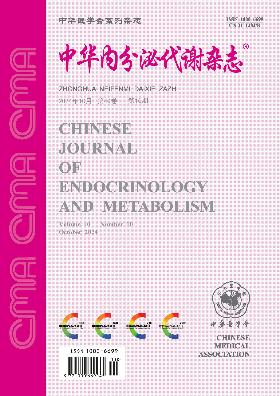哈萨克族人群代谢综合征和framingham风险评分作为心血管疾病预测指标的比较
Q4 Medicine
引用次数: 0
摘要
目的比较代谢综合征(MS)和Framingham风险评分作为哈萨克族心血管疾病(CVD)预测指标的差异。方法对新疆哈萨克族代表地区的居民进行5年以上的随访。我们根据MS成分的权重为MS分配了一个连续的风险评分,用于预测CVD的发展。比较MS和Framingham风险评分在新疆哈萨克族代表地区预测年份的能力。我们根据MS成分的权重为MS分配了一个连续的风险评分,用于预测CVD的发展。使用Cox回归和受试者操作特征曲线比较MS和Framingham风险评分在预测CVD发展方面的能力。结果CVD发生率为13.87%,MS组CVD发生率高于非MS组(21.59%vs11.10%,P<0.001),MS危险评分受试者操作特征(ROC)曲线下面积显著大于MS分级(0.727vs0.585,P<0.01);MS危险性评分曲线下面积与Framingham危险性评分的曲线下面积接近(0.732vs 0.727,P=0.673)。CVD与MS危险性得分每五分位数的相关性比相同暴露条件下Framingham风险性评分与CVD的相关性更显著(4.61,9.33,14.15,22.29vs 3.69,6.36,8.47,16.99)哈萨克族人群心血管疾病的预测因素。关键词:代谢综合征;Framingham风险评分;哈萨克人;心血管疾病本文章由计算机程序翻译,如有差异,请以英文原文为准。
Comparison between metabolic syndrome and framingham risk score as predictor of cardiovascular disease among Kazakhs population
Objective
To compare metabolic syndrome(MS)with Framingham risk score as predictors of cardiovascular disease(CVD)among Kazakhs population.
Methods
The participants were the residents who had been followed up for more than 5 years in representative areas of Kazakhs in Xinjiang. We assigned MS a continuous risk score for predicting the development of CVD based on the weights of MS components. MS and Framingham risk score were compared in terms of their ability in predicting years in representative areas of Kazakhs in Xinjiang. We assigned MS a continuous risk score for predicting the development of CVD based on the weights of MS components. MS and Framingham risk score were compared in terms of their ability in predicting development of CVD using Cox regression and receiver operating characteristic curve.
Results
The incidence of CVD was 13.87%. The incidence of CVD was higher in the MS group than it in the non-MS group(21.59% vs 11.10%, P<0.001). The area under the receiver operating characteristic(ROC)curve of MS risk score was significantly larger than that of MS classification(0.727 vs 0.585, P<0.001); the area under the curve of MS risk score was close to that of Framingham risk score(0.732 vs 0.727, P=0.673). The association between CVD and each quintile of MS risk score was more significant than that between Framingham risk score and CVD under the same exposed condition(4.61, 9.33, 14.15, 22.29 vs 3.69, 6.36, 8.47, 16.99).
Conclusion
MS risk score that included age may be a better predictor of CVD among Kazakhs population.
Key words:
Metabolic syndrome; Framingham risk score; Kazakhs; Cardiovascular disease
求助全文
通过发布文献求助,成功后即可免费获取论文全文。
去求助
来源期刊

中华内分泌代谢杂志
Medicine-Endocrinology, Diabetes and Metabolism
CiteScore
0.60
自引率
0.00%
发文量
7243
期刊介绍:
The Chinese Journal of Endocrinology and Metabolism was founded in July 1985. It is a senior academic journal in the field of endocrinology and metabolism sponsored by the Chinese Medical Association. The journal aims to be the "Chinese broadcaster of new knowledge on endocrinology and metabolism worldwide". It reports leading scientific research results and clinical diagnosis and treatment experience in endocrinology and metabolism and related fields, as well as basic theoretical research that has a guiding role in endocrinology and metabolism clinics and is closely integrated with clinics. The journal is a core journal of Chinese science and technology (a statistical source journal of Chinese science and technology papers), and is included in Chinese and foreign statistical source journal databases such as the Chinese Science and Technology Papers and Citation Database, Chemical Abstracts, and Scopus.
 求助内容:
求助内容: 应助结果提醒方式:
应助结果提醒方式:


